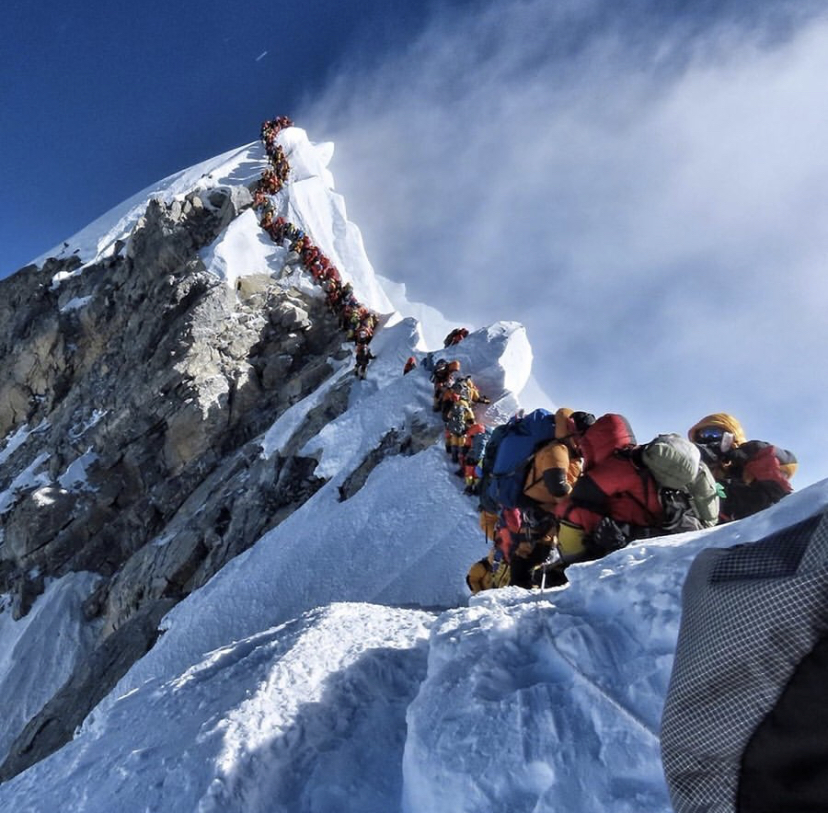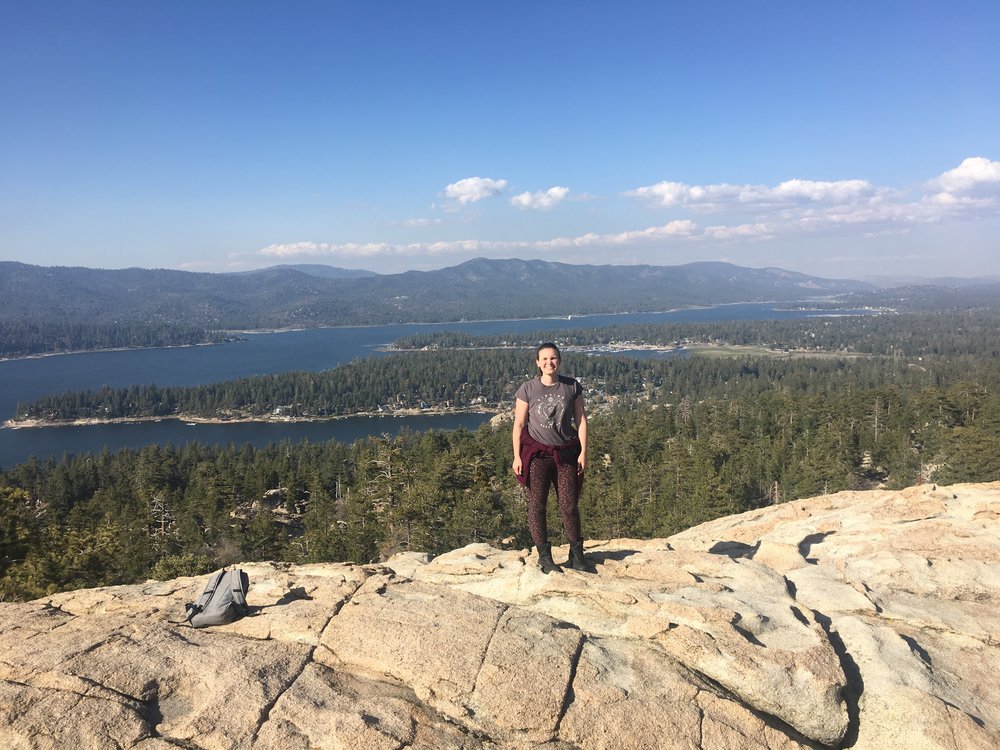by Greg Curtis: This is me and my daughter Carly making our ascent toward Castle Rock (in the background) above Big Bear Lake California. As we hiked, bouldered and climbed, I had 5 powerful things illustrated to me as a Connector in a local church. Scroll down this photo journal to see what I learned.
1. Adjust your expectations of people.
Arriving at a new destination on a hike or in life takes effort. This was an almost 3 mile round trip hike through beautiful forest and waterfalls, ascending and descending almost 900 feet in elevation. Not impossible by any means, but not a walk in the park either. I often say that connecting at your church and mine is not a coast….it’s a climb! Recalibrating our expectations for guests in terms of their readiness to connect and the challenges they face in becoming a real part of a spiritual family would do us well.
2. Pace the journey.
We have not trained for this in any way so at this altitude, we had to stop and rest to pace ourselves to actually reach our goal instead of turning back in exhaustion. New people at our church cannot connect to a new group of friends or a ministry role by just attending one event. Our assimilation events are not gondola rides to the top: they are a leg in the journey. Give them multiple opportunities to pace each part of the process of connecting for them so they will actually reach the summit at your church and not give up.

3. Crowds make the journey less enjoyable.
Recently, 200+ people arrived at the summit of Everest….at the same time! It made for an impossible situation up there, after a colossal effort by everyone to reach the top. Can you imagine planning for what happened in this photo? When Carly and I went on this hike, we encountered only 2 small groups of people and one dog in 3 hours of hiking. We were alone together most of the time, enjoying having nature to ourselves. Breaking down your connection classes into table groups instead of rows really makes the difference between a more connectable experience and a less enjoyable one.
4. Detours happen.
Plan for it. We decided to boulder up a waterfall instead of take the trail. It was a blast but I had to use my GPS, walk over a long fallen tree trunk to cross a stream and maneuver through unfamiliar territory to get back on the trail afterward. This photo reveals some almost stairway like stones that led out of a stream to get us around a rock fall. Sometimes our guests will have some life happen and not return your contacts to get them trained for a new role. Sometimes they won’t finish your on-boarding sessions and opt to finish at a later date. Plan for it and know what you will do to leverage that rather than just let them go into the sunset unconnected.
5. You need a guide to help you.
Unfortunately, I forgot my hiking boots and ended up in some tennis shoes that had little grip. When we arrived at Castle Rock, I could only get up part of the way safely leaving Carly to finish alone. She kept trying for 30 minutes or so but had trouble finding the best route alone. Out of nowhere came two guys who were like mountain goats hopping up the Rock. They offered to slow down to include her in their ascent. When she arrived at the top, it was glorious! Do you have table hosts, Greeters, and people in your office who will function as personalized guides to walk people through their connection journey? This is needed and the results will be awesome!

1. Which one of these 5 lessons is the most important one for your church right now? Which one is most important for your team? Which one is most important for you?
2. What is an expectation that you or your church have towards guests that is proving to be unrealistic?
3. What are some ways to pace the journey of connection? At what junctures do you find the biggest need for some space to process or a break to catch their breath?
4. Brainstorm some of the possible detours that guests take in their journey to connect at your church. After listing them, determine a planned response or way of leveraging that detour to help them continue their journey toward connecting in a small group or a ministry team.
5. How can you make your connection experience smaller and less crowded for those making the climb?
6. Where is the most strategic and helpful place you can place a Sherpa Guide to insure guest make a full connection at your church?
Source: 5 practical things I learned on a hike help me connect people better at church





